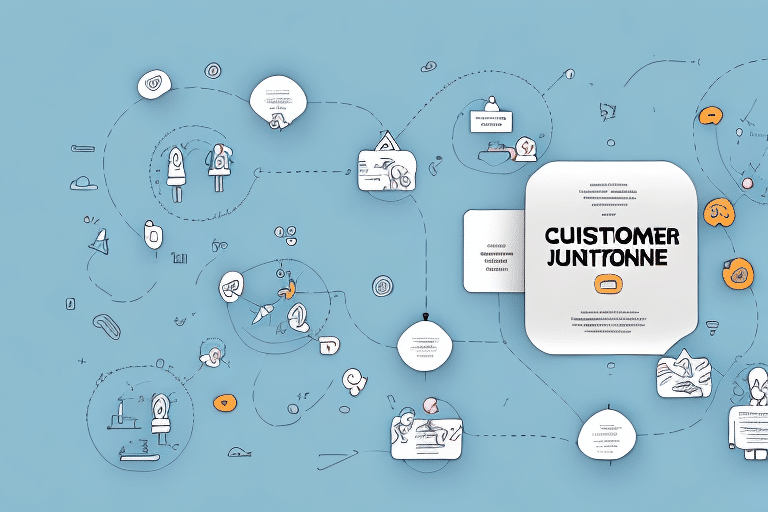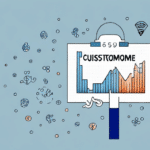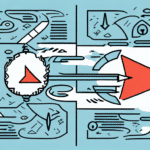Maximizing Customer Retention Lifetime Value
As a business owner, you know that customer acquisition is crucial for growth. However, have you stopped to consider the value of your existing customer base? Maximizing customer retention lifetime value should be just as much a priority as attracting new customers. Retaining customers not only generates more revenue but also creates brand loyalty and advocacy. In this article, we'll explore the importance of customer retention for businesses, strategies for increasing customer retention, and ways to measure success in retaining customers.
The Importance of Customer Retention for Businesses
Understanding why customer retention is vital can significantly impact your business's success. Studies show that it costs five times more to attract new customers than to retain existing ones. Furthermore, existing customers spend 67% more on your products or services than new customers (Forbes). Retaining customers is more cost-effective and establishes a stable revenue stream. Additionally, loyal customers can become brand advocates, leading to word-of-mouth marketing and increased revenue.
Another benefit of customer retention is the ability to gather valuable feedback from your customers. Maintaining relationships with existing customers allows businesses to gain insights into their needs, preferences, and pain points. This information can be used to improve products or services, enhance customer experience, and ultimately increase customer satisfaction and loyalty.
Moreover, customer retention helps businesses build a strong reputation and differentiate themselves from competitors. Satisfied customers are more likely to leave positive reviews, recommend the business to others, and remain loyal, creating a competitive advantage and attracting new customers seeking a reliable and trustworthy brand.
Understanding Lifetime Value and Its Impact on Business Growth
Lifetime value (CLV) is a crucial metric for measuring the success of customer retention efforts. It represents the total revenue a customer generates during their relationship with your business. By calculating CLV, businesses can determine the worth of retaining a customer and invest resources appropriately. Increasing customer retention rates leads to a higher lifetime value, fostering sustainable growth.
Furthermore, understanding CLV helps businesses make informed decisions about customer acquisition costs. By comparing the cost of acquiring a new customer to their estimated lifetime value, businesses can determine if the investment is worthwhile. This approach prevents overspending on customer acquisition and emphasizes the importance of retaining existing customers for long-term profitability.
Key Strategies for Increasing Customer Retention
Implementing effective strategies is essential for enhancing customer retention. Here are some key approaches:
- Offer Personalized Experiences: Tailoring interactions based on customer preferences can significantly enhance satisfaction.
- Provide Excellent Customer Service: Focus on prompt response times and efficient issue resolution to build trust.
- Create Loyalty Programs: Develop programs and personalized incentives that reward loyal customers.
- Solicit Customer Feedback: Understand customer needs and preferences to make informed improvements.
- Utilize Email Marketing: Keep customers engaged and informed about new products or services.
Another effective strategy is offering exceptional after-sales support. Providing customers with resources and assistance to maximize their purchase ensures satisfaction and addresses any issues promptly.
Additionally, creating a sense of community around your brand can boost retention. Engage customers through social media, host events or webinars, and encourage them to share their experiences and feedback.
Building Strong Customer Relationships for Long-Term Success
Establishing robust customer relationships is fundamental to retaining customers. Prioritizing customer experience and communication fosters loyalty, advocacy, and higher lifetime value. Key methods include:
- Proactive Communication: Send order updates or product releases to build trust and transparency.
- Personalized Experiences: Use customers' names in email campaigns and offer tailored product suggestions.
- Regular Feedback: Ask for feedback frequently and act on it to demonstrate that customer opinions matter.
- Excellent Customer Service: Treat customers with respect and empathy to enhance their experience.
Offering loyalty programs or rewards incentivizes continued business and fosters a sense of community among customers. Additionally, providing exclusive deals or discounts to loyal customers strengthens these relationships.
Transparency and honesty are also crucial. Addressing any product or service issues openly and offering solutions builds customer trust and shows a commitment to providing the best possible experience.
Personalization and Engagement
Personalization is a critical component of customer retention. Customers are more likely to remain loyal to a brand that understands their preferences and needs. Personalization can take many forms, such as sending tailored content, recommending relevant products or services, or addressing customers by name in communications. Leveraging data and analytics enables businesses to create personalized experiences that increase retention and lifetime value.
Effective Communication Strategies
- Email Marketing: Inform customers about new products, services, or promotions.
- Proactive Updates: Provide shipping details or payment reminders to keep customers informed.
- Social Media Presence: Engage with customers through social platforms.
- Personalized Messages: Send birthday coupons or anniversary thank-you notes.
Using Data Analytics to Improve Customer Retention and Lifetime Value
Data analytics is a powerful tool for enhancing customer retention and lifetime value. By analyzing customer behavior and preferences, businesses can identify potential issues and create personalized experiences that resonate with their customers. Examples of utilizing data analytics include:
- Key Metrics: Use metrics like customer acquisition cost or CLV to evaluate retention efforts.
- Customer Feedback: Leverage feedback to pinpoint areas for improvement.
- Behavior Analysis: Analyze purchase history, browsing behavior, or demographic information to tailor experiences.
- Predictive Analytics: Anticipate customer needs and address them proactively.
Measuring the Success of Your Customer Retention Efforts
Assessing the effectiveness of customer retention strategies allows businesses to understand their impact and make data-driven decisions. Key metrics to track include:
- Customer Retention Rate: The percentage of customers retained over a specific period.
- Customer Satisfaction Score: Measures how satisfied customers are with your products or services.
- Net Promoter Score (NPS): Gauges customer loyalty and likelihood to recommend your business.
- Customer Lifetime Value (CLV): The total revenue a customer is expected to generate during their relationship with your business.
Common Mistakes Businesses Make When Trying to Retain Customers
While customer retention offers significant benefits, certain mistakes can hinder progress. Common errors include:
- Neglecting Customer Experience: Failing to prioritize experience and communication can lead to dissatisfaction.
- Underinvesting in Personalization: Not investing in the technology or resources needed for personalization can reduce effectiveness.
- Poor Incentive Strategies: Offering irrelevant or poorly targeted incentives fails to engage customers.
- Ignoring Customer Feedback: Neglecting feedback and refusing to implement changes can damage relationships.
The Future of Customer Retention: Emerging Trends and Technologies
The future of customer retention is increasingly technology-driven, with innovations like artificial intelligence (AI), machine learning, and chatbots offering new possibilities. These technologies enable businesses to create highly personalized and efficient experiences that maximize customer retention lifetime value. Emerging trends include:
- Predictive Analytics: Enhanced use of predictive analytics to anticipate and meet customer needs.
- Chatbots: Development of sophisticated chatbots for personalized customer service.
- AI Integration: Combining AI and machine learning to generate personalized content and experiences.
Leveraging Social Media to Boost Customer Retention and Loyalty
Social media is a powerful tool for enhancing customer retention and loyalty. By establishing a strong social media presence, businesses can engage with customers and build communities that promote retention. Effective strategies include:
- Consistent Posting: Share relevant content, such as blog articles or product updates, regularly.
- Responsive Engagement: Quickly respond to customer inquiries or issues to demonstrate attentiveness.
- Exclusive Events: Host events or promotions exclusively for social media followers to foster a sense of belonging.
- Active Interaction: Engage with customers through comments, likes, and shares to build relationships.
The Importance of Employee Satisfaction in Driving Customer Retention
Employee satisfaction plays a crucial role in customer retention. Satisfied employees are more likely to deliver exceptional customer experiences, leading to higher retention rates. Key strategies to boost employee satisfaction include:
- Employee-Focused Culture: Prioritize work-life balance and career development.
- Training and Development: Invest in employee training to enhance customer service skills.
- Competitive Compensation: Offer attractive compensation and benefits packages.
- Encourage Feedback: Solicit and incorporate employee feedback into company decisions.
Best Practices for Managing Churn Rate and Increasing Lifetime Value
Managing churn rate is essential for increasing customer retention lifetime value. Churn rate refers to the percentage of customers who stop using your products or services over a specific period. Effective practices for managing churn rate include:
- Analyze Churn Rate: Identify the reasons why customers leave to address underlying issues.
- Proactive Problem Solving: Address customer concerns or issues before they lead to churn.
- Personalized Incentives: Offer tailored incentives or offers to customers at risk of churning.
- Regular Feedback: Continuously solicit feedback and implement changes based on customer input.
Maximizing customer retention lifetime value requires a strong focus on customer experience, personalization, and communication. Businesses that prioritize these areas and continually refine their retention strategies will achieve higher revenue and long-term success.






















